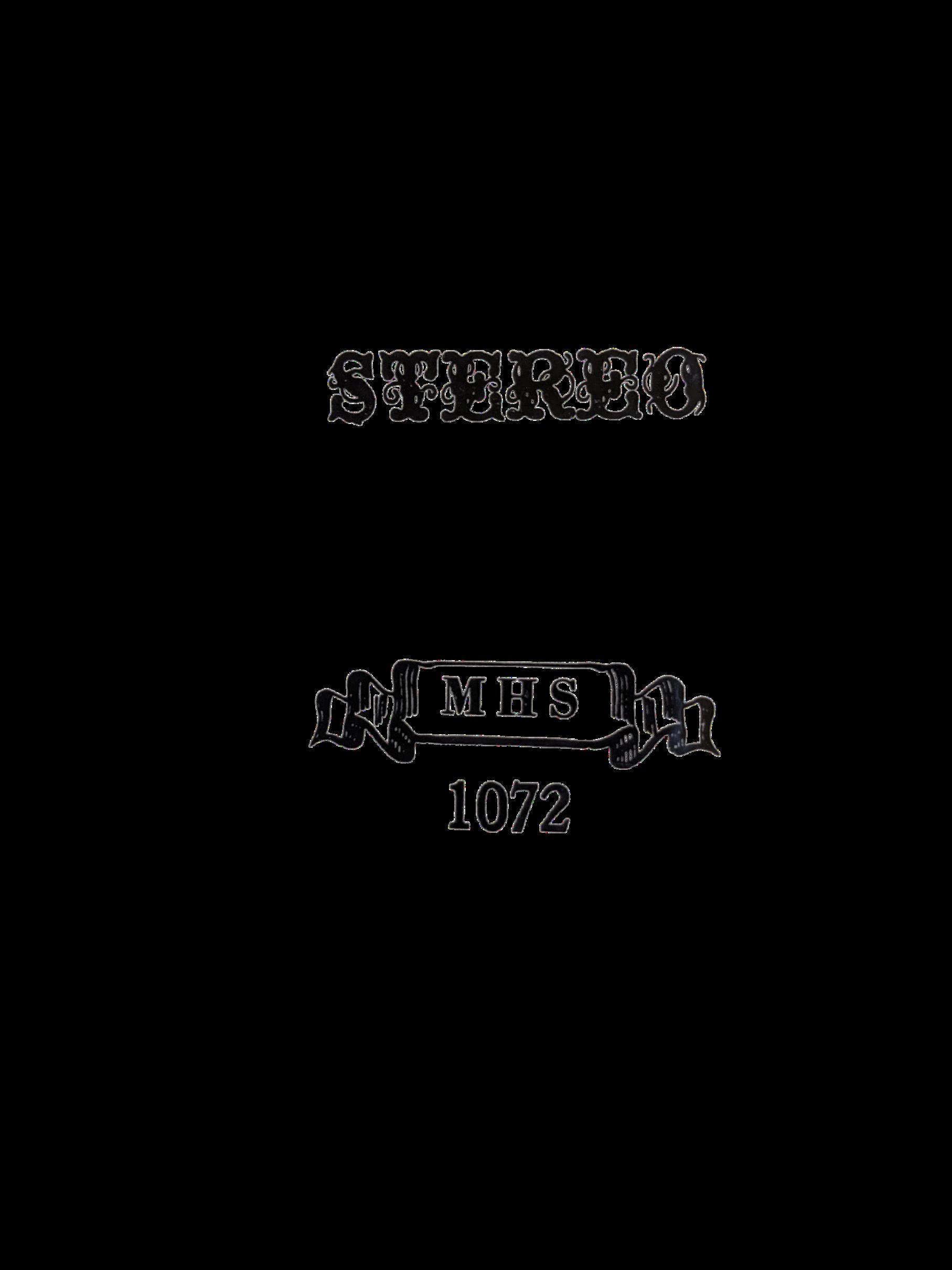





Before the days of radio, hi-fi and television how did people enjoy music at home? Those who could sing or play a musical instrument were much in demand to entertain their families and friends. Those less gifted had to rely to a great extent on music boxes, until the perfecting of the player piano and Edison‘s invention of the cylinder phonograph opened the still developing technology of recorded sound.
The music boxes heard here represent major types of automatic musical instruments which were developed in Europe and the United States, most of them during the 18th, 19th and early years of the 20th century. The idea of automatic musical mechanisms, however, had its roots in much earlier periods. As early as 1325, a monk in England devised a mechanism of major proportions which, when installed in a church tower, triggered life-size figures to strike the bells on the hour. The bells ringing from thousands of belfries all over Europe, not a few employing such animated strikers, may have inspired watchmakers to explore the possibilities of other automated musical objects. These watchmakers --mostly in France and Switzerland-- worked on an entirely different scale. They concentrated on the creation of the tiniest possible musical units and cased in jewel like novelties which soon
became immensely popular with royalty, nobility, and the very rich.
These small items included musical watches, some with lilliputian automated figures cavorting on the watch face or hiding behind a second lid, bird boxes, and snuff boxes, some of which also contained watches and automata. Tiny musical units were installed in cane tops, fans, perfume bottles, pendants, seals, and the like. These mechanical wonders were also masterpieces of the goldsmith’s, jeweler’s, enabler’s, and miniaturist’s art. Their makers spared neither pains nor materials in producing these objects employing gold, silver, pearls, gems, and enamel, and later tortoise shell, bone, ivory, etcetera. They were frequently decorated with miniatures of landscapes and portraits executed in enamel.
Especially popular were the bird boxes which could be held in the hand. Slide a little lever and a tiny bird feathered with brilliant hummingbird plumage would appear from beneath an enameled cover with wings fluttering, ivory beak opening and closing, head moving from side to side, it sang its song and silently disappeared into its box. The Swiss JacquetDroz, the Rochat brothers, and Charles Bruguier were among those who brought this craft to the level of a fine art between 1752 and
1850. The Swiss craftsman then directed their skills to developing larger mechanisms. Louis Favre, working in Geneva in the early 18th century, is known as the father of the Swiss cylinder box as we know it. Such names such as Nicole Freres, the LeCoultres, DucammonGirod, Bremond, Paillard to mention only a few are still revered by collectors for their excellence and distinctive qualities.
The more familiar Swiss cylinder music box which they developed was sometimes provided with extra cylinders. It consisted, in addition to a cylinder, of one or more musical combs containing graduated lengths of teeth or tines, each of which was tuned to accommodate the program of program of music. There are two combs were tuned alike. As the cylinder revolved these teeth vibrated and emitted sounds as they were struck by the appropriate one among thousands of tiny pins inserted by hand into the body of the cylinder. Each cylinder of the earlier Swiss boxes, driven by a key wound spring mechanism, was programmed to play from about two to six tunes. After 1870, they played anywhere from 6 to 20 tunes and the spring was wound by means of a ratchet. These boxes reached their peak of perfection and popularity from approximately 1835 to 1910, but it was not until 1875 that the first
musical box factory was built at Saint Croix, Switzerland. Before this development craftsman worked on individual parts of a music box in their own home workshops. The factory method at Saint Croix, where incidentally, music boxes they’re still manufactured, resulted in greater and cheaper production. Music box firms employed musicians to arrange or even compose works and to transpose them onto cylinders using a typewriter-like machine with thin, flexible sheets which they perforated with holes to match the notes of the musical score. To this already complex musical instrument manufacturers added bells, often with finely chiseled bird or bee-shaped strikers, drums, castanet sounding blocks, and even small Reed organ sections activated by bellows and reeds. All these elements were synchronized to play at specific intervals or altogether to produce the illusion of a miniature orchestra. The French meanwhile using a Swiss-type mechanism, added animated figures who acted out small dramas and farces. With the development of the disk box in Germany the music box lover was offered a wider choice of repertoire and the music box industry opened to mass marketing since discs could be made quickly, cheaply, and in large quantities. The cylinder was replaced by
perforated steel or copper discs from six inches to 20 or 30 inches in diameter. The popular German Polyphon and Symphonium models, to name only a few of the firms that sprang up in this now booming industry, were evidently rivaled by the Regina, the American offshoot of the famed Polyphon firm which set up manufacturing in Rahway NJ, followed by others such American trademarks as Capital, Criterion, and Olympia. A number of these boxes were equipped with coin slot mechanisms for use in public halls.
Repertoire expanded with these new massproduced boxes, marrying their mirroring their rise in popularity. In the higher priced, handcrafted Swiss boxes, available only to the relatively affluent, musical selections were drawn mostly from opera operettas and popular salon music of the day, with an emphasis on Bellini, Donizetti, Mozart, and Rossini, and later from the immensely popular Gilbert and Sullivan operas. With the advent of mass-produced disc boxes, folk songs, patriotic and sacred songs, as well as music hall favorites, now long forgotten equivalents of our current top ten, were issued by the tens of thousands to satisfy popular demand and to suit individual tastes and cravings for the latest hits.
In addition to the musical pleasure which music boxes afforded their owners, the cases themselves are often of superlative workmanship using rare woods often in combination, such as rosewood, fruitwood, olive wood, Thuya wood, mahogany, and macassar-ebony, the cabinet makers inlaid box lids and sides with musical instruments, scrolls, or foliage as motifs and used ivory, mother of Pearl, and metal to make decorative medallions, escutcheons, and borders. The more elaborate upright disc boxes were often in the shape of miniature temple like structures with side columns, intricately carved or turned pediments, some encasing a clock. Bay window doors, sometimes of Tiffany type glass, enhance some Regina models, once proud adornments of any Victorian parlor.
A native of northeastern Italy, Rita Ford came to the United States when she was six. She spent her childhood and young womanhood on Fishers island NY and in Hartford CT. She graduated as a registered nurse when she was 19 and worked in that capacity, as well as that of social worker, for several years in Hartford. When she moved to New York upon her marriage in the 1930s she started to visit antique galleries and shops and to collect in a small way. It was when her husband became incapacitated that she turned to the antique field professionally. Occasionally, when purchasing a group of antique items, a music box would come her way she gradually developed such an interest in them that about 30 years ago she decided to specialize exclusively in the purchase, sale, and repair of music boxes.
